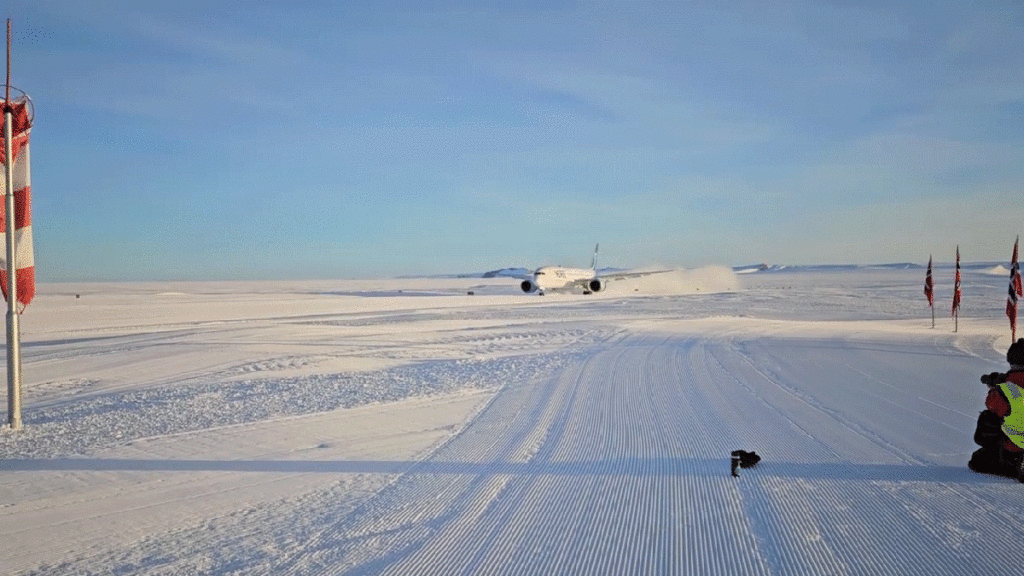Largest Plane To Ever Fly To Antarctica Lands On Ice Field

Landing a plane on a normal runway is no easy task. Landing a Boeing 787 Dreamliner on an ice runway in Antarctica is another beast entirely, but that’s exactly what Norse Atlantic Airways pilots did at 2 a.m. on November 15, according to CNN. In doing so, the 787-9 became the first widebody aircraft to land on the sixth continent.
Valtteri Bottas Gets Excited About The Las Vegas Grand Prix | Jalopnik Chats
The 787 – which can be configured to carry up to 330 passengers – landed at Troll Airfield on a “blue ice runway” that was just 3,000 meters (9,840 feet) long and 60 meters (100 feet) wide, CNN says. Oh, and it was made from ice and snow. That’s both shorter and narrower than your average commercial runway. Crazy stuff. This particular 787-9 measured in at 206 feet long, 197 feet wide and 56 feet tall. That’s a big boy plane.
This was no ordinary 787 flight, though. It just just 45 passengers, most of whom were scientists from the Norwegian Polar Institute. They contracted the flight to take them and 12 tons of equipment to the Troll research station in Queen Maud Land, Antarctica. It wasn’t exactly a quick flight, either. It departed Oslo, Norway on November 13. Then it stopped in Cape Town, South Africa. From there, it set off to make its wild landing on the 15.
The largest aircraft ever to land on Troll Airfield, Dronning Maud Land, Antarctica
There’s good reason for a 787 Dreamliner making this trip, even if just 45 passengers were on board, according to CNN:
The Dreamliner’s ample cargo space made it the ideal aircraft for the flight, said Daniel Carey of Aircontact, the broker which arranged the flight. Its fuel efficiency was also a factor, said Paul Erlandsson, field service representative at Boeing. The aircraft made it to Antarctica and back to Cape Town without needing to refuel.
[…]
Camilla Brekke, the Norwegian Polar Institute director, said that using the larger aircraft was a more sustainable way or reaching the famously fragile continent.
“The most crucial aspect is the environmental gain we can achieve by using large and modern aircraft… [which] can help reduce overall emissions and the environmental footprint in Antarctica,” she said.
“Landing such a large aircraft opens up entirely new possibilities for logistics at Troll, which will also contribute to strengthening Norwegian research in Antarctica.”
The “blue ice” the Dreamliner landed on is formed when air bubbles are squeezed out of compressed snow and firn layers, according to Fox Weather. Those layers are made up of partially-compacted snow left over from previous seasons. I wouldn’t be brave enough to land on this kind of stuff, but I’m also not brave enough to do most things.







